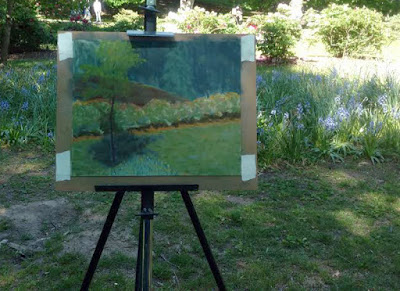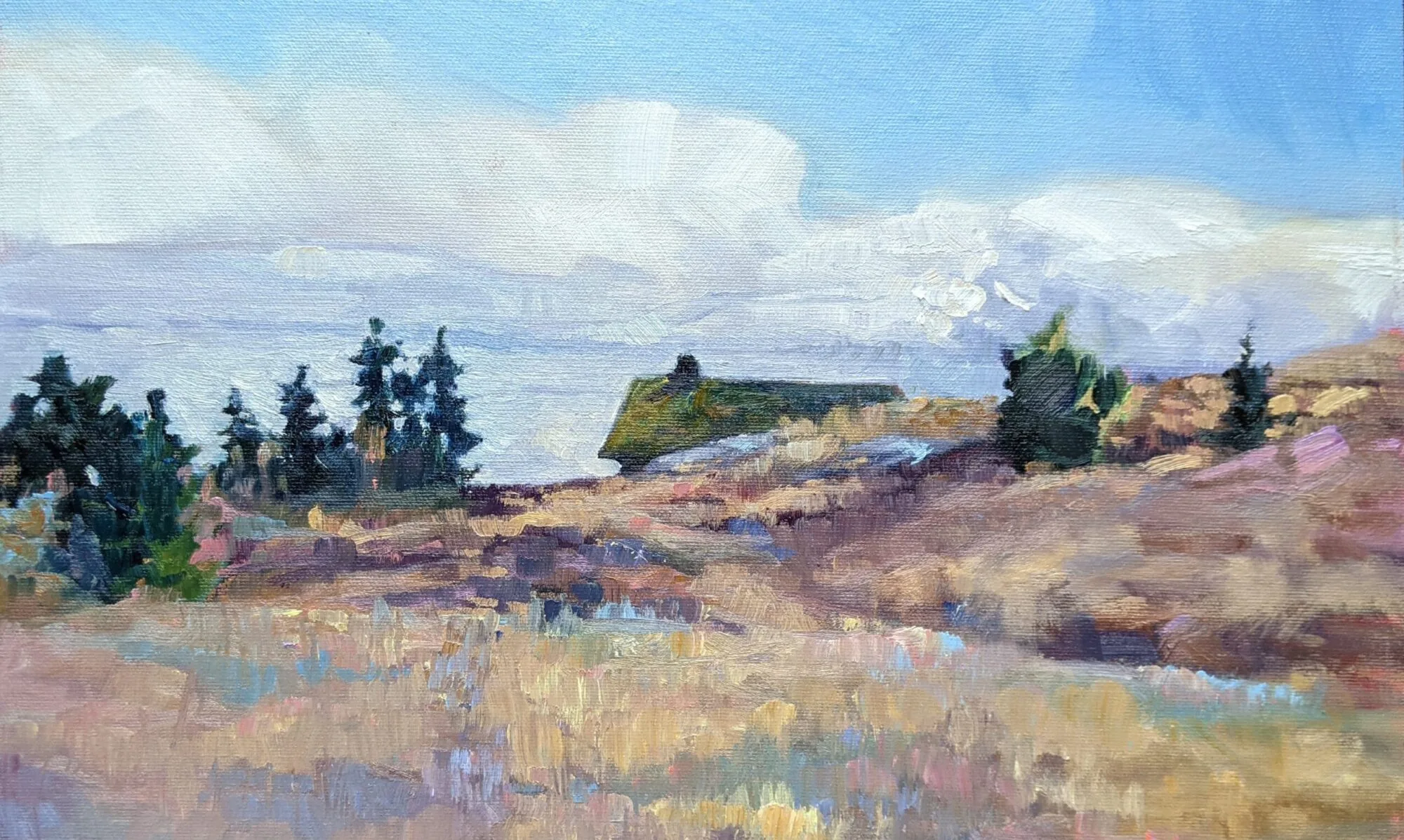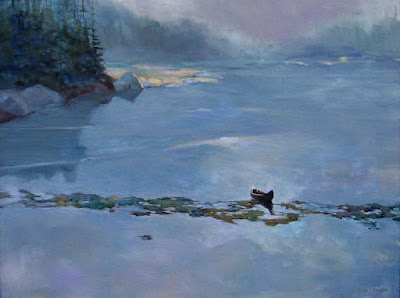Some painting rules are meant to be broken, but there are some absolutes that just make your painting better and easier.
 |
| Catherine Bullinger’s tree. I like the delicacy of the branches and the dappled light on the grass. |
Yesterday I taught a one-day class in Rochester’s Highland Park. It’s hard to distill the rules of painting into a three-hour class, but here they are:
Fat over lean: This means applying paint with more oil-to-pigment over paint with less oil-to-pigment; in other words, use turpentine or odorless mineral spirits (OMS) judiciously in the bottom layers and painting medium in the top layer.
 |
| Ann Limbeck caught a lovely curve in the bed of tree peonies. |
The more oil, the longer the binder takes to oxidize. This keeps paints brighter and more flexible. However, oil also retards drying. Using too much in underpainting, will result in a cracked and crazed surface over time.
The makers of
Galkydand
Liquin say their products are designed to circumvent this rule. However, we have no track record for these alkyd-based synthetic mediums, whereas we have centuries of experience layering the traditional way.
Even if we could change it, why would we want to? Underpainting with soft, sloppy medium gives soft, sloppy results. The coverage is spotty and thin. The traditional method is tremendously variable and gives great control. It just takes a little while to learn it properly.
 |
| Nicole Reddington pushed the design elements and created a myriad of greens. |
Big shapes to little shapes: Work on the abstract pattern before you start focusing on the details.
The untrained eye looks at a scene and thinks about it piecemeal and in terms of objects: there’s a flower, there’s a path, there’s a tree. The trained eye sees patterns and considers the objects afterward.
Is there an interesting, coherent pattern of darks and lights? Are there color temperature shifts you can use? In the early phases of a painting, you must relentlessly sacrifice detail to the good of the whole. This is true whether the results you want are hyper-realistic or impressionistic. Composition is the key to good painting, and the pattern of lights and darks is the primary issue in composition.
 |
| Kirt Lapham allowed me to really push him out of his comfort zone, with excellent results. |
Following the fat-over-lean rule, above, allows you to think about broad shapes first. In the field an underpainting done with turpentine or OMS will be mostly dry when you start the next layer. Stop frequently to make sure you haven’t lost your darks. If you have, restate them.
Dark to light:This is only important for oil painters. Acrylic painters can proceed any way they want, as long as they’re using opaque paint. And, of course, watercolor works (generally) in the opposite direction.
In oils, it’s easy to paint into dark passages with a lighter color; the reverse is not true. This doesn’t mean oil painters don’t jump around after we set the darks; we can and do.
 |
| Cris Metcalf accepted the challenge of painting white-on-white. |
Don’t choose slow-drying or high-stain pigment to make your darks. The umbers are great because the manganese in them speeds drying. However, I don’t want to carry an extra tube just for this. I use a combination of burnt sienna and ultramarine.
Draw slow, paint fast: This isn’t a classic tenet; it’s something my student Rhea Zweifler coined in my class years ago. Nevertheless, it’s a great rule.
 |
| Kathy Mannix created a broad chromatic range with a small selection of pigments. |
Taking time over your drawing allows you to be looser and more assured in your painting. Do value studies and sketches before you commit to color. Your mind needs time to think about the shapes it sees. Spend that time in the drawing phase, when ideas are easy to assess. Otherwise, you will be doing it on canvas, where your mistakes are more difficult to clean up.
 |
| Don Fischman finished this Fantasia at home. |
Value studies and sketches allow you to be inventive. When you’ve only spent three minutes on a sketch, you don’t lose much by throwing it out. Drawing and value studies at the beginning actually speed you up, rather than slow you down.
Note; I’m sorry I didn’t get photos of all the work, which was excellent. I can either take pictures or teach, but not both!






































